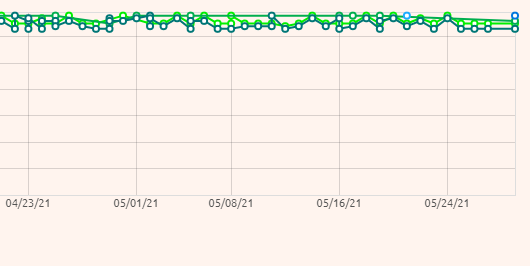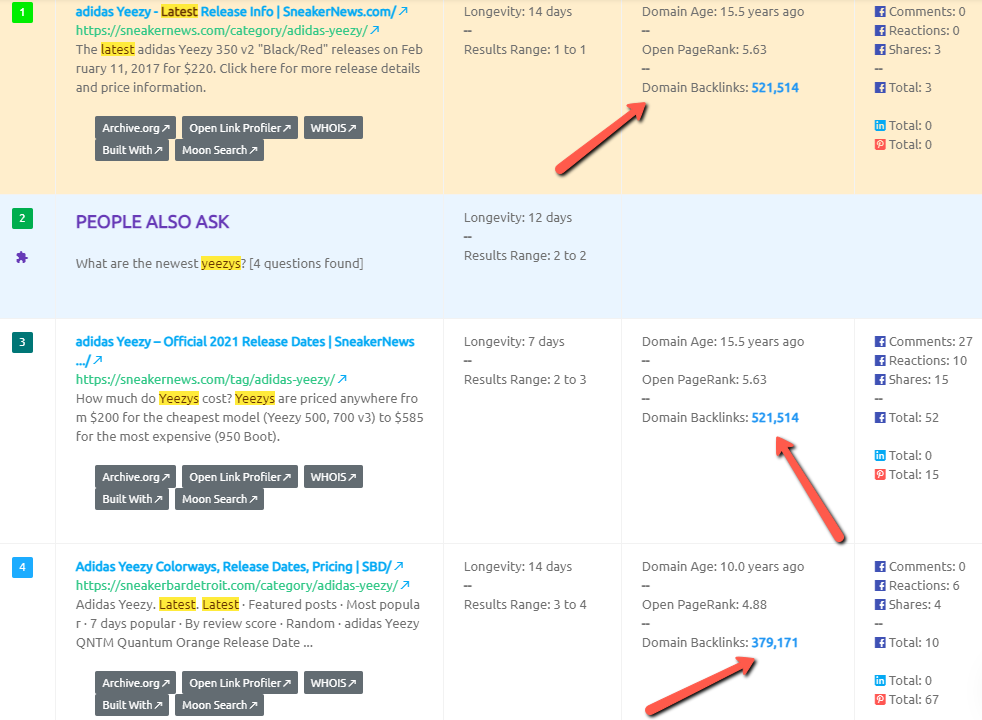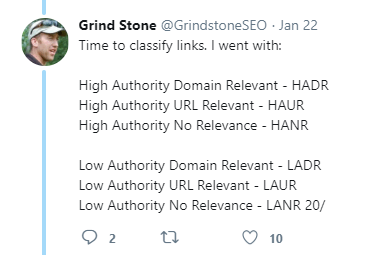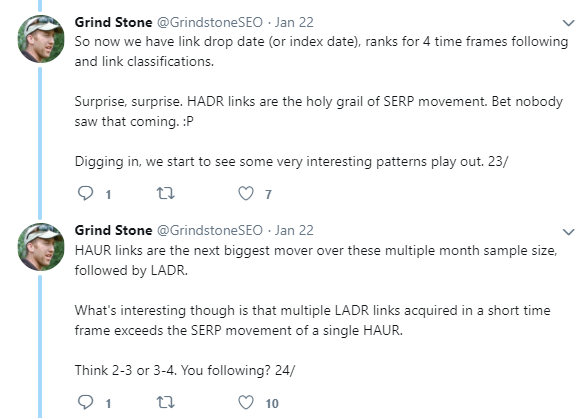The 2021 Analysis of SEO for Multiple Industries

An Actionable Guide For Ranking And SEO For Multiple Niches 2021
Hey WooNation,
Welcome to our 7th edition of "What it takes to rank in X industry right now" where we dive into what's working across several niches as a whole.
Past editions took weeks of work and data crunching to uncover the specifics of what it took to rank in each industry. You can find the most recent versions of those below:
- The 2020 Analysis of SEO for Lawyers and Attorneys
- The 2020 Analysis of Higher Education SEO
- The 2020 Analysis of SEO for Local Search Engine Marketing
- The 2020 Analysis of SEO for the Ecommerce Industry
But not everyone works in one of those four industries.
So I decided to combine the results to see what it takes to rank in Google for 2021 generically by combining those niches and then some...
We add in industries such as SaaS, automotive, real estate, affiliate review sites, luxury goods, and many more.

This is the first time we combine results from all the niches we did before. Prior studies focused on each niche to extract what it would take to hit top spots per industry.
For 2021, we really wanted to mix it up. We did that by running each individual study, sprinkling in more niches and industries we haven't done before, combining the results into 1 set of data, and then extracting the higher averages of the whole.
It's the same process we've always done here at SERPWoo; it's just with more data and not at the niche level like in prior years.
On to the good stuff now.
What did we find?
Keywords Are Dominating
The top 3 factors for 2021 came out as:
- Keywords in HTML ( 1st page average of 238 )
- Keywords in H3 tags ( 1st page average of 37 )
- Term Frequency ( 1st page average of 6 )
As a matter of fact, "keyword usage" took the top 16 factors before we got to a "non-keyword" factor and then proceeded to dominate the following seven factors ( for a total of 23 factors ) after that.
So the top 16 were keyword related, and the top 23 were all keyword related except 1 factor of the top 23. When we jump to the top 30, only four elements are not associated with keywords.
Wow.
It reminds me of when I called it back in 2020 when I did the "What's working in the Legal SEO niche" when I mentioned keyword stuffing was all the rage for ranking the legal/attorney niches. See that mention here -> https://www.serpwoo.com/blog/analysis/lawyer-seo/ .
Let's rank like it's 1999, folks.

To ensure any results from this year's legal niches didn't skew the total average, I took a look at all the results from the other niches to be sure. And yes, Virginia, keywords were taking the top spots in those niches as well individually.
Some of the more exciting finds as an average for the 1st page include:
- Word count nearing 2,958 words on average
- Number of H3 tags = 14
- The year was included in the Title for many good ranking URLs, showing review posts and updated posts dominating.
- Nofollow links showing up in the top 50 factors several times, but Dofollow nowhere to be found in the top averages
- Keywords in MAIN and ARTICLE tags showing heavy in the top averages. These are tags I hardly used before personally. Mainly I stuck to P and DIV.
- Number of questions coming in as 11 for an average of the 1st page
- Keywords in tags such as:
- LI
- ALT
- ID
- NAV
- SCRIPT
They were showing up in the top 30 factors just like they did in 2020 and 2019.
Keep in mind, though, some of these tags are nested in others.
An LI tag could be nested in a DIV, which is nested in a MAIN tag, which is nested inside a BODY tag.
Don't be fooled to think that you have to have X number of keywords in a MAIN tag, another X number in an ARTICLE tag, and then another in a DIV, and even more in an LI tag.
You're going to have to spread it out and count any tags nested in other tags as part of those higher-level tag counts too.
Something that kept popping up this year ( and in prior years, go check the articles ) was the H3 tag—either number of H3's or keywords in H3's or LSI terms in H3's.
H3's came up more than any other heading tag. This would make sense for an H1, but when you consider H2's or H4's.. the H3 tag dominates when it comes to factors for SEO. AND it's been that way for several years now.
Personally, I'm still amazed by the importance of MAIN and ARTICLE tags. Not that I don't believe the results, but these have been tags that I've just about never used in my life, and I feel a bit stupid for not using them in the past.
Getting past how important keywords are, let us move to the top factors NOT about keywords.
Non-Keyword Related Factors In The Top 50
In order of importance ( average, 1st-page results ):
- Size of Body Tag ( Kilobytes ) = 162
- P Tag number = 75
- Contains Terms of Service
- Size of Page ( Kilobytes ) = 258
- Nofollow links = 14
- Number of Questions = 11
- JSON LD Person
- Year in Title Tag
Personally, I don't know anyone that "measures" the size of their page or body tag actively. But I find the information good to know going forward as it might help with page speed.
One surprising factor was related to "questions." I've never really came across questions being a factor in prior studies. While I know questions have been important for content, it's the first time I've really seen it come up as a top correlation for ranking in a study.
Year in the Title tag seems to always come up, and JSON LD data has been a recurring factor also. Not much really needs to be talked about here. Both help with the authority and timeliness of the content getting published.
Nofollow links and having terms of service are also a bit surprising for me. Not because the data shows it, but because these have been factors coming up for years in prior studies from SERPWoo.
Showing up every year helps elevate how important some of these factors really are, and their longevity shouldn't be taken lightly.
And that brings me to the next topic. What factors seem to show up over and over again in general frequently?

You would think if certain factors keep showing up for different reasons, they must be important… right?
And the findings shouldn't be too surprising if you have done SEO for more than a couple of years.
Tags that kept repeating themselves in the data for the top 50 factors
- 11 times, keywords or number of Heading tags came up, especially for H3
- 8 times, keywords or number of URLs/Links came up, especially Nofollow
- 5 times, keywords or use of the Title tag came up
- 3 times, JSON LD came up
It might seem a little vague, but what I wanted to find out was how many times something like URLs ( be it number of URLs, type of URL, keywords in URLs, placement of URLs, etc ) or Heading tags came up in the study as a top 50 factor.
You know, so I could really see what potentially Google might be focusing on or where I could spend more time when developing my content or page structure.
Then after grouping these findings, I wanted to count the frequency and try to see if maybe specific groupings were more critical than others.
I ended up with four groups that broke down as Heading tags, URLs, Title tag, and JSON LD data.
If I were to plan out a new site or page, these would be the top areas I would pay most attention to ( besides of course, quality of content ) when looking to structure my data.
Again, this should not be a huge surprise at all for most of us. However, I think it really nails home just how more important H3s are than H2s and H4s, etc.
Domain age, it's still important.
Crazy, I know.
Call it domain age, call it the opportunity to obtain more links… blah blah blah.
No matter how you cut the cheese, domains less than a year old just aren't popping up in the top spots compared to domains that are older than one year.
Please don't argue with me why—the why doesn't really matter. Only the fact does.
And besides, you telling me all these blackhats can't obtain a massive amount of niche relevant backlinks on day 1 of their new domain if it was really link opportunity that makes domain age important?
The fact is, aged domains just rank better as a whole, no matter the reason.
Don't fight the power, folks. We've gone over research, prior studies, and more on this topic. Just know your brand new domain isn't more than likely going to rank.
Backlinks, of course they're important too.
Does this really need to be mentioned in 2021?
Almost no listings in the top positions have weak backlink profiles. It's either the sheer number or highly relevant backlinks, helping rank pages for decent terms.
Check out what I'm talking about below ( courtesy of SERPWoo of course ).

Keep in mind too, what Grindstone told us about what kind of links we actually needed though with his in-depth study…


Be sure to focus your efforts on domain-relevant links if you want those big moves in the SERPs.
So we already know from years of experience and tons of studies that we need:
Backlinks:
- And not just any backlinks, backlinks from niche relevant domains
- A healthy amount of backlinks
- Backlinks that mix a dose of brand, generic, and niche relevant anchors
Technical SEO:
- Fast page speeds
- Index allowed for your robots file
- Accurate sitemaps
- Etc
Misc:
- Aged domain ( at least more than 12 months old )
- Good mobile experience
- Not a ton of ads on the page
But content seems to be a moving window. Especially with all the updates Google pushes concerning their ML/AI and manual reviewers.
And that's why we do these studies and look at what's correlating with ranking factors regarding content.
So you can see what it takes to rank in a niche and what it takes to rank in general as a whole.
Did you feel we missed anything in this roundup? Have you found other data to support more factors when it comes to ranking with your content?
We'd love to know, so drop us a comment below.
